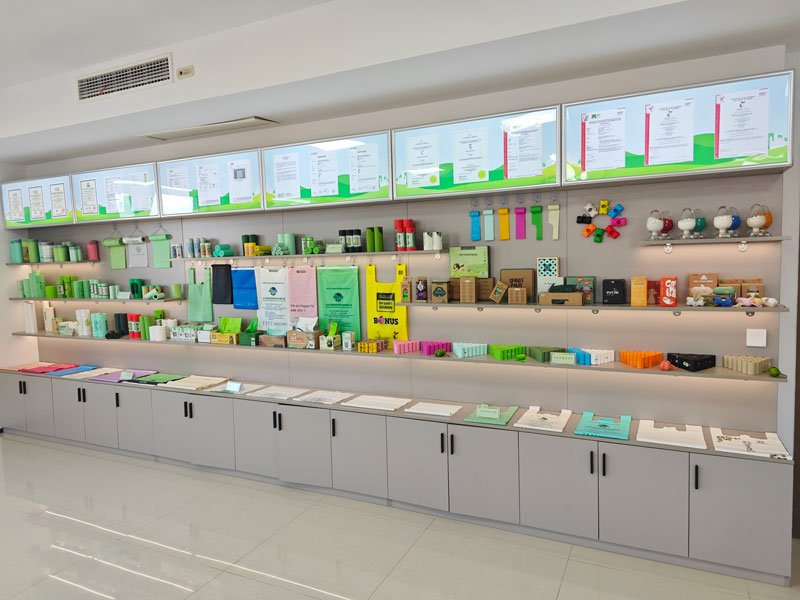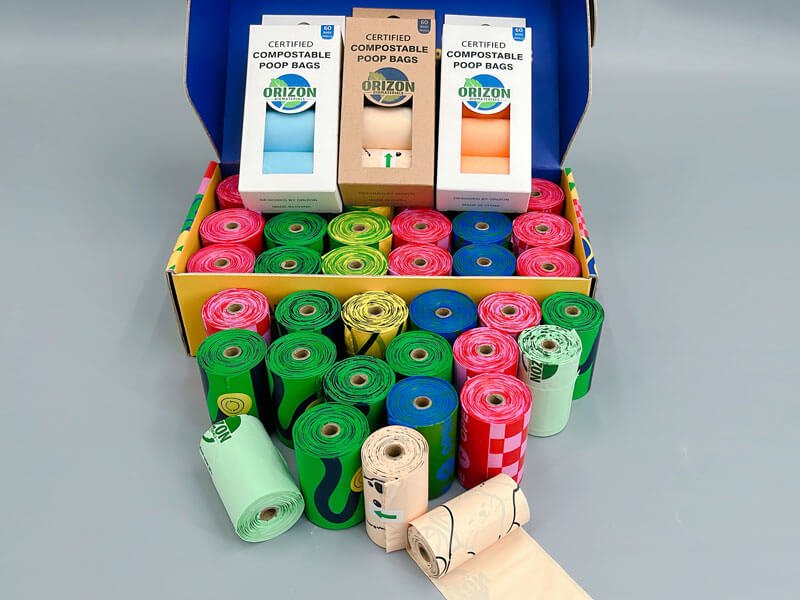Many users planning to start an eco-friendly packaging project will consider their budget beforehand. Currently, it's difficult to find a straightforward answer in the market: How much do compostable bags cost? Because these aren't fast-moving consumer goods (FMCGs) that can be purchased directly for home use, but rather custom orders in large quantities, the OEM price of compostable bags involves many factors.
Each OEM order is a unique project, and because there are so many uncontrollable variables involved, the final price isn't a fixed retail price.
In this article, we'll explain in detail the factors that influence the OEM price of compostable bags, hoping to help you navigate the complexities of your compostable bag OEM process.

Raw Materials: PLA vs. PBAT
Prices are significantly influenced by raw materials. In the compostable sector, PLA and PBAT are the most common primary raw materials.
| Material Type | Advantages | Disadvantages | Price Level | Best Applications |
|---|---|---|---|---|
| PLA (Polylactic Acid) | High transparency, rigid structure, plant-based (e.g., corn) | Brittle, low toughness, poor heat resistance | Relatively low | Packaging that needs product visibility (e.g., bread bags, garment bags) |
| PBAT | Excellent flexibility, tear-resistant, similar feel to plastic | Usually opaque, fossil-based origin | Relatively high | High-strength use cases (e.g., shopping bags, garbage bags) |
How does this affect price?
PBAT has a high fracture growth rate, significantly impacting the bag's ductility and flexibility. PLA has a relatively high molecular modulus, high tensile strength, and stiffness, but relatively poor ductility.
PLA is typically used to replace rigid materials like PP and PET in traditional plastics, and can be used in injection molding, extrusion, blow molding, and blister molding. PBAT, on the other hand, is more like LDPE and is primarily used for blown film bag making.
If you want a soft yet strong shopping bag, the PBAT content will be higher, and the base cost will increase accordingly. If clarity and stiffness are more important, a higher PLA content is recommended.
Recommended articles:
- What Is PBAT? A Comprehensive Guide to 2025
- PBAT vs PLA: Which Bioplastic Is Best for the Environment?

Environmentally Friendly Bag Size and Thickness
The larger and thicker the bag, the more raw materials it uses and the higher its price.
Bag thickness is typically measured in microns.
A lightweight 15-micron bag for household food waste and a 30-micron T-shirt bag used in supermarkets and carrying several kilograms of goods use twice as much material, leading to a significant cost difference.
When requesting a quote, try to provide the exact dimensions (length x width x side/bottom gussets) and desired thickness. If you're unsure about the thickness, please inform the specific use and load capacity of the bag so the factory can recommend a cost-effective solution.

Oem Manufacturing Cost per Unit for Biodegradable Bags
The larger the order volume and the more customized bags, the lower the price.
Startup Costs and MOQ: For each batch of customized orders, the factory needs to preheat the machine (according to my experience in the workshop, this takes about half a day, so it's impossible to preheat the machine for each order), adjust parameters, and change raw materials. These operations all incur "startup costs." Factories set a minimum order quantity (MOQ) to ensure that startup costs are effectively spread across the entire machine.
Effects of Scale: The fixed costs per bag are significantly different when producing 10,000 bags than when producing 500,000 bags. The larger the order volume, the lower the unit cost.
A reputable factory will provide a tiered quote based on your order quantity (e.g., 50,000, 100,000, or 300,000).

Compostable Bags OEM Price vs. Branded Bags Price
As companies become more environmentally conscious, they are using eco-friendly printing on their bags, which also affects the price.
Printing Colors: Each additional color requires an additional printing plate, resulting in an additional one-time "plate fee." Multi-color printing also requires more complex production adjustments, resulting in higher labor and time costs.
Printing Area: Printing a small logo on a bag requires significantly different amounts of eco-friendly ink and production complexity than printing a full-color, double-sided image.
Additional Processing: If you require special customizations, such as die-cutting a custom handle shape for the bag or customizing the retail packaging with branding, these will be factored into the total cost.
Conclusion:
You've already learned about the factors that influence the OEM price of compostable bags. To make your quote request more efficient, we've prepared a checklist. The more complete information you provide when requesting a quote from us or other suppliers, the faster and more accurate your quote will be.
Checklist of Information Required for an Accurate Quote:
✅ Bag Application: supermarket shopping, restaurant takeout, clothing packaging, etc.
✅ Desired Material: PLA, PBAT, or in other words, whether the bag needs to be "rigid" or "soft."
✅ Exact Dimensions: Length x Width x Side/Bottom Gussets (if any).
✅ Thickness: Micron value, load capacity requirements (kg).
✅ Printing Design: Provide vector files such as AI/PDF, number of printing colors, and single/double-sided printing.
✅ Estimated Order Quantity: For example, 50,000 pieces.
✅ Desired Trade Terms: For example, FOB Shanghai, CIF New York, etc. (If unsure, feel free to omit this information).
Ready to start your OEM eco-friendly packaging project?
Click here to visit our OEM services page and submit your project request to receive a detailed quote!





